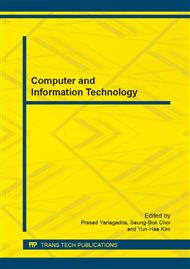p.1337
p.1342
p.1347
p.1353
p.1360
p.1364
p.1368
p.1375
p.1379
Multi-Robot Formation Control Based on the Artificial Potential Field Method
Abstract:
The artificial potential field method is one of multi-robot formation control methods. In this paper we make a study on multi-robot formation control based on the artificial potential field method and the leader-follower method. The robots are set leader robot and follower robots respectively. According to the known ideal distance between the leader and follower, we adjust the repulsiveness or attractiveness to maintain multi-robot formation. Multi-robots obstacle avoidance is adopted the artificial potential field method. In this paper the triangle formation is taken as an example. At last the simulation result proves the validity of this algorithm.
Info:
Periodical:
Pages:
1360-1363
Citation:
Online since:
February 2014
Authors:
Price:
Сopyright:
© 2014 Trans Tech Publications Ltd. All Rights Reserved
Share:
Citation:


